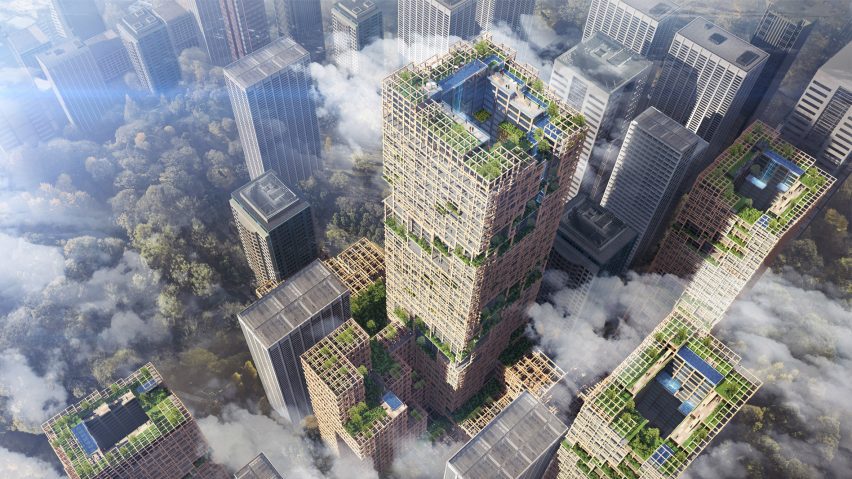
Building tall with timber "does not make sense" say experts
As part of our Timber Revolution series, Dezeen asked mass-timber experts about the ongoing race to build ever-taller wooden buildings.
"For most buildings, tall timber does not make sense," said Arup fellow Andrew Lawrence. "Timber's natural home is low-rise construction," he told Dezeen.
"The reality that timber is best suited technically to smaller buildings, and that this is where it can have the most impact on reducing embodied carbon, has been lost."
Webb Yates senior structural engineer Florence Browning agreed, explaining that "timber alone has its limitations" when it comes to constructing high-rise buildings.
"If we want to win the race against climate change, the construction industry is going to have to get comfortable with using more mass timber in everyday buildings," said Browning.
"However, timber alone does have its limitations and there are reasons why alternative, more man-made materials were developed."
Tall timber trend "stems from a misunderstanding"
Mass timber is an umbrella term for engineered-wood products, which typically consist of layers of wood bound together to create strong structural components.
It is increasing in popularity in the construction industry due to wood's ability to sequester carbon, which means timber has a significantly lower embodied carbon than concrete and steel.
A global race to build taller timber is now underway, with the world's five tallest timber high rises all completed in just the past four years, including the 87-metre Ascent in the US.
Other engineered wood towers in the works are the Atlassian by SHoP Architects and BVN, and Rocket&Tigerli by Schmidt Hammer Lassen, both of which are expected to reach record-breaking heights.
However, according to Arup fellow Lawrence, the proliferation of tall timber towers is partly the result of widespread misconceptions about the material's properties.
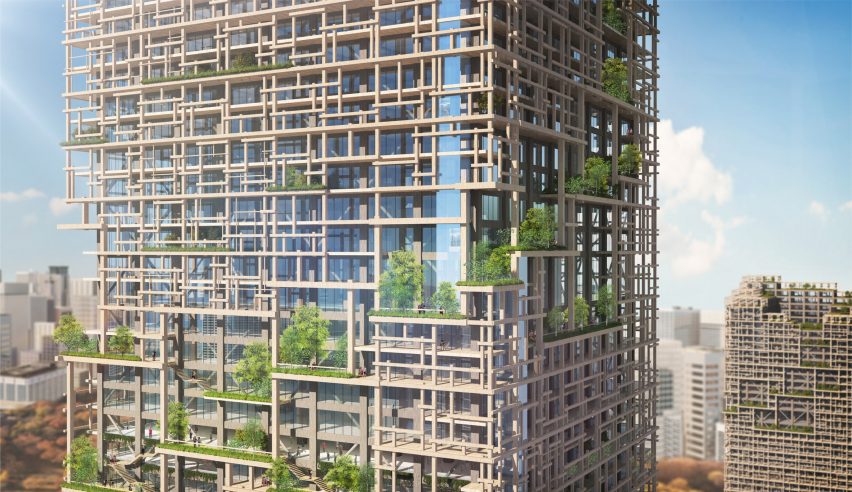
"We believe that the push for widespread use of timber in high-rise architecture stems from a misunderstanding of the real advantages of the material," said Lawrence.
"Wood has many advantages, but we must also remember that it is combustible and brittle. It is also much lighter and weaker than other construction materials," he explained, referring to concrete and steel.
Browning explained that this lower strength makes it less suitable for use in tall buildings, as it requires the design of very large structural components.
"Above certain heights and spans, the size of [timber] elements are so large it becomes uneconomical," she said. "This also limits the amount of useable space."
Mass timber suited to "smaller and more intricate buildings"
Furthermore, structural timber loses some of its low-carbon benefits when used for taller buildings, according to Lawrence.
In high-rise buildings particularly, wood requires extra treatment to help reduce its combustibility and improve its acoustics, but this can add to its carbon footprint.
"It is the smaller buildings, and especially those where the wood can be left fully exposed thanks to the generally lower fire and acoustic requirements, where it can have the most impact in reducing carbon compared with other materials," said Lawrence.
Thornton Tomasetti senior associate Kristina Rogers echoed that timber is best-suited for buildings where the timber can be left untreated and on display.
"I get really excited about a design where we think really creatively about what that timber is going to look like, and how it interacts with the function of the building," she told Dezeen.
"On smaller and more intricate buildings, we get to really think about how the timber is celebrated, and the structural properties of the material and how to display them in the building."
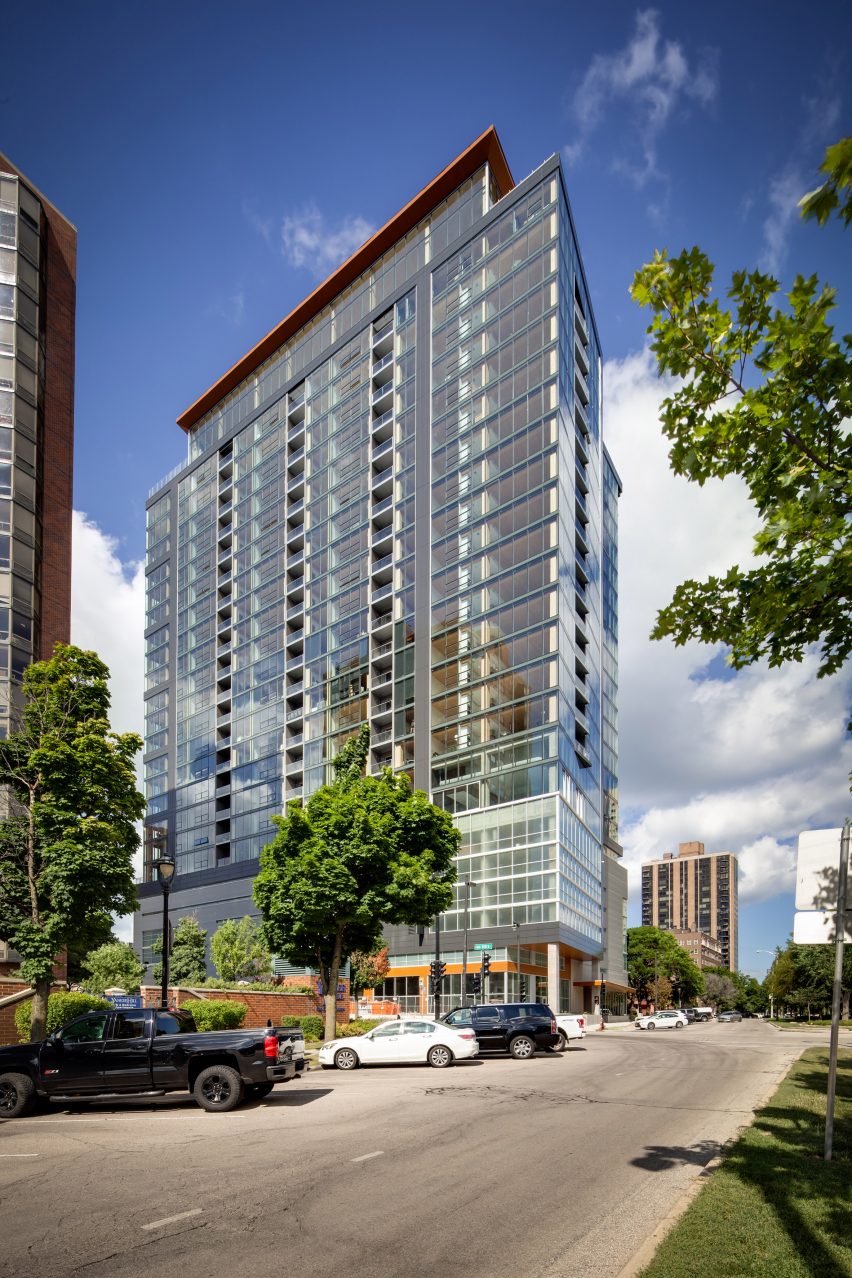
Atelier Ten associate Amy Leedham added that the low-embodied carbon of mass timber is sometimes cancelled out in tall buildings by the need for concrete and steel to prevent excessive swaying.
"The challenge that we've seen in mass-timber high rise [design] is that it's a balance between using mass timber and being able to avoid having to add too much extra material," she said.
"There's still a decent amount of concrete or steel [needed] to help brace typical mass-timber high-rises," Leedham continued.
British architect Andrew Waugh raised a similar point in an interview for the Timber Revolution.
"It's bullshit, because if you're going to build a tall building in timber, you still have to fill it full of concrete to make sure it doesn't wave around," he told Dezeen.
He suggested the industry should start measuring the success of timber buildings in different ways, such as material efficiency or their impact on the wellbeing of occupants.
"We need pioneers to push the limits"
Despite the drawbacks, experts believe the race to build taller with timber will continue due to the appeal of competition and breaking records.
"I agree that lower-rise timber is the appropriate way forward, but I assume we'll keep seeing the occasional timber towers competing for architecture or engineering awards," Arup associate director Hein told Dezeen.
Pioneering timber architect Hermann Kaufmann agreed, explaining that the tall timber trend will not disappear because "everyone wants to be the one to break the record".
"The world record thing is a little childish," he said. "But it's like all things in life, everyone wants to be the one to break the record."
Nevertheless, Kaufmann concedes the tall timber race can drive innovation and help to give mass-timber products "a new value".
"I compare building tall timber towers to Formula 1 driving," explained Kaufmann. "It's somewhat pointless but ultimately it's a driver of innovation."
He argues that testing the structural limits of wood in this way has led to innovations that he once thought would not be possible, in turn making it easier to use wood in lower-rise buildings.
"These tall buildings brought mass timber to new dimensions that I didn't think were possible 15 years ago," he explained.
"If you prove that you can build a 20-storey building from wood, there's no more reason to debate about four or five-storey buildings and their fire safety."
Atelier Ten's Leedham agreed that tall timber buildings are "not always going to make sense" but that they can help the industry to use timber more efficiently.
"We need all of the innovations, and so we need pioneers to push the limits," she continued. "We need those examples to push the industry in that direction."
This is one of the objectives of Japanese architecture studio Nikken Sekkei, which is currently developing a conceptual proposal for the world's first timber supertall skyscraper for a site in Tokyo named the W350 Plan.
"It is not intended for immediate construction at this point in time, but by setting major goals, it aims to create a roadmap for technological development and uncover issues that need to be solved [in mass timber]," project architect Hajime Aoyagi told Dezeen in an interview.
"Timber is not suited to all types of construction"
However, for other engineers including Magne Aanstad Bjertnæs, innovation in timber shouldn't just mean focusing on building taller. Instead, he argues that architects and engineers should be exploring how to utilise wood most effectively in hybrid, or composite, structures.
"I think some pushing of the boundaries is healthy because it gives some progress to the industry and makes it easier to go a bit lower on the next project," said Bjertnæs, a team leader at the engineering firm Sweco.
"But I also believe that you should use the right material for the right purpose and not use timber when it shouldn't have been used," he continued, alluding to its use in high-rise buildings. "I don't think you should be afraid to combine materials."
"If we want to address our impact on climate change, we need a diverse pool of resources so that we have multiple low-carbon options to choose from and apply – timber is not suited to all types of construction," echoed Browning.
"As engineers and designers, we need to interrogate the design and determine the best material or combination of materials for the job."
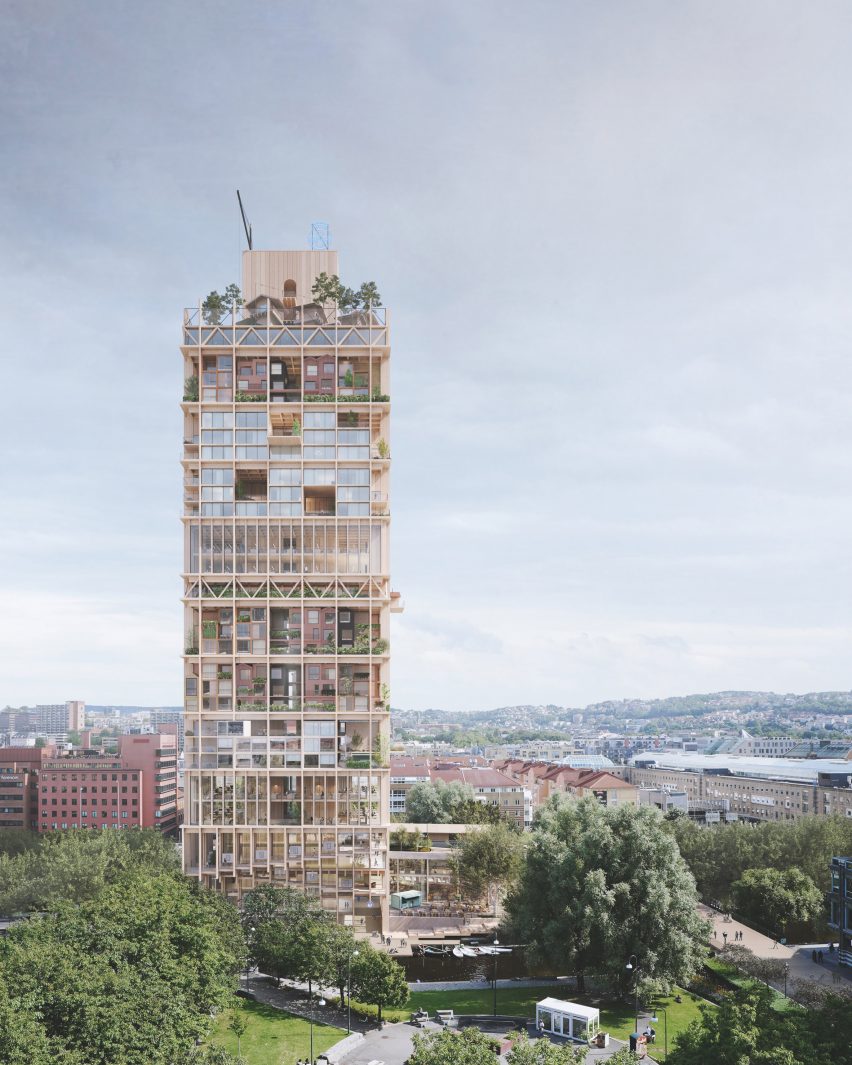
Tomas Stokke from Haptic Architects is also an advocate of using timber in hybrid formats.
"I'm not in any way opposed to pure-timber buildings, but I just think we need to work with what's best for the given situation," he told Dezeen.
"I think for timber high-rises, you will get more result and value and more opportunities if you take a slightly more pragmatic approach to materials," he said. "Let's use the right materials where they're most useful."
This was his studio's approach when developing its concept for The Regenerative High-Rise – a modular tower designed with the engineering firm Ramboll that Stokke hopes can transform tricky sites in cities worldwide.
The design centres around a timber-composite superstructure, with CLT floorplates and steel-composite glulam and reinforced concrete used for the columns and cores.
"We have to understand what happens at the end of life of timber"
With the tall timber trend expected to continue, Rogers said the industry must prioritise improving its understanding of the whole lifecycle of these tall wooden buildings and design for dismantling.
"Something that's exciting about the future is deconstruction and reuse of timber elements," she explained. "We have to understand what happens at the end of the life of timber."
At the end of a building's useful life, there is a risk of its timber components being lost to landfill, meaning the carbon it stores will be released back into the atmosphere.
She said this is an important consideration when it comes to high-rises as their timber components are so large and are, therefore, bigger stores of carbon.
"Something I think that's interesting about tall wood buildings is how to use these larger elements of something that can be reused in the future," Rogers said.
"If we could demount things and use them again, in the future, I think that's somewhere where the industry has to go. But it's not quite there yet."
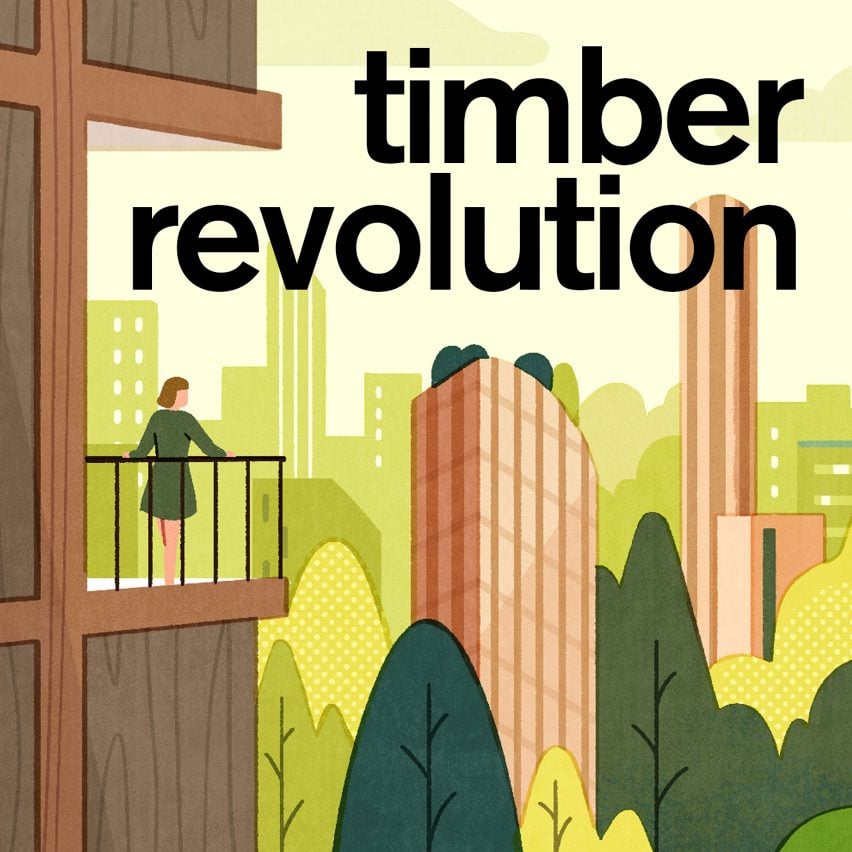
Timber Revolution
This article is part of Dezeen's Timber Revolution series, which explores the potential of mass timber and asks whether going back to wood as our primary construction material can lead the world to a more sustainable future.
Dezeen in Depth
If you enjoy reading Dezeen's interviews, opinions and features, subscribe to Dezeen In Depth. Sent on the last Friday of each month, this newsletter provides a single place to read about the design and architecture stories behind the headlines.